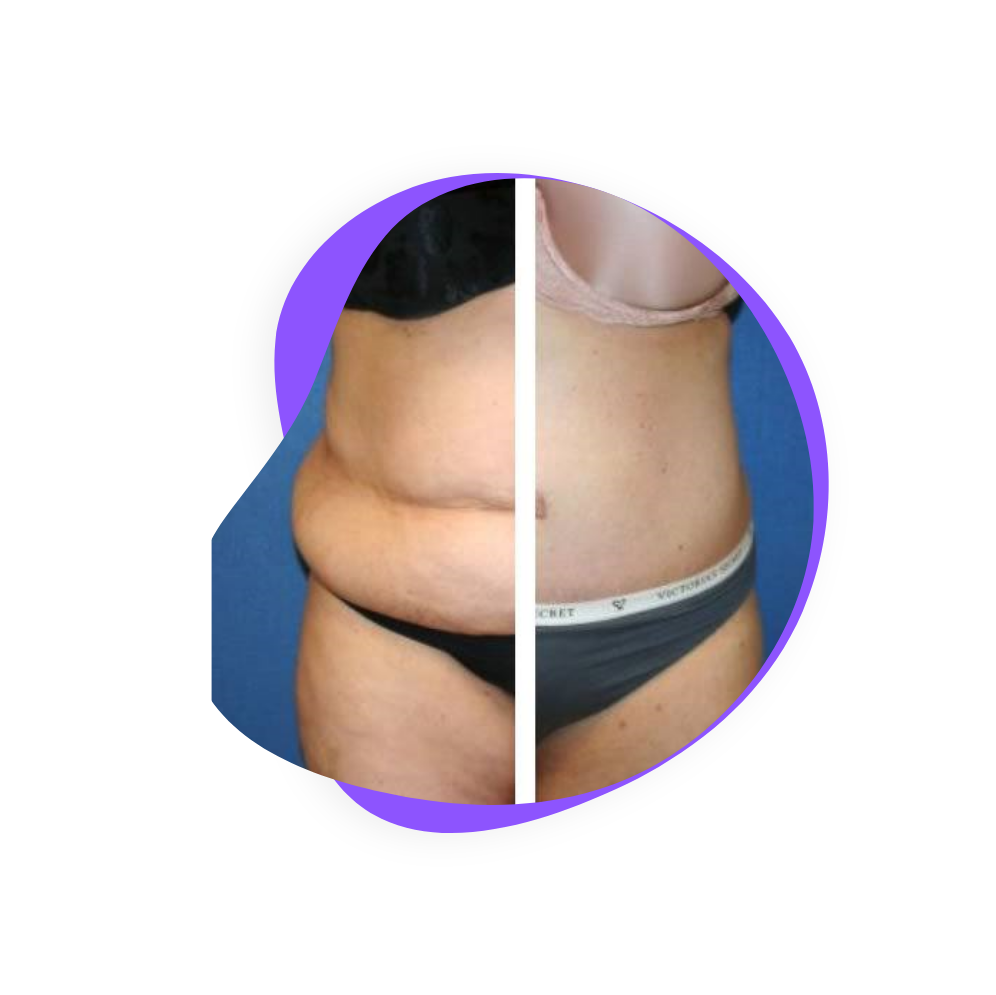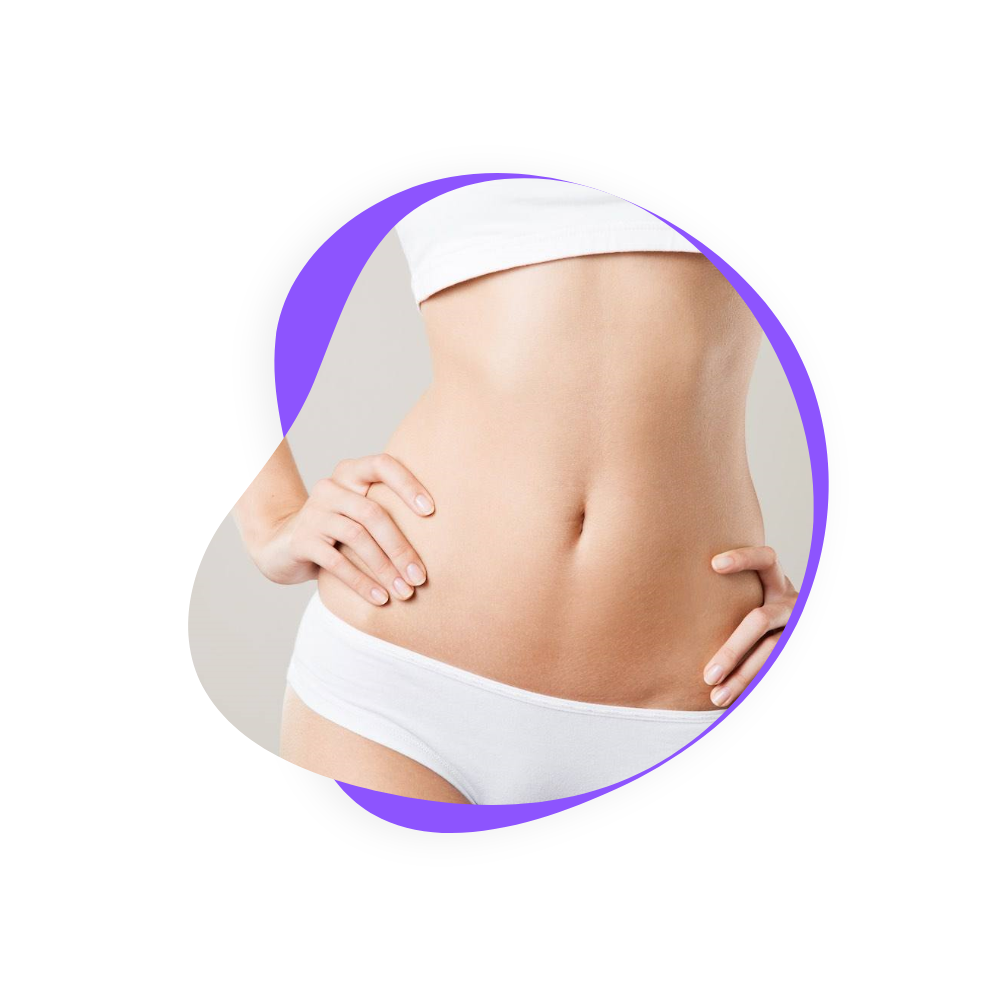No amount of sit-ups or ab-toning workouts can make a stomach flat when there is significant excess skin and stretched out muscles present following pregnancy or dramatic weight loss. Of course, diet and exercise can help tighten the skin and the muscles underneath the tissue. But significant excess skin will remain unchanged unless a surgical procedure like a tummy tuck is performed. Tummy tuck surgery, or abdominoplasty, can be an effective solution to excess skin and significantly improve the appearance of the abdomen.

A tummy tuck is a cosmetic surgery performed to remove excess skin and fat in the abdomen while restoring separated abdominal muscles and improving the overall aesthetics of the midsection. In a tummy tuck, excess skin is removed from the abdominal area. The underlying muscles and connective tissues are sutured and the skin is then repositioned to create a flatter, more toned appearance.
Individuals with excess skin around the belly or with a weak abdominal wall often choose to have a tummy tuck. Liposuction can resolve stubborn fat in the stomach area, but it cannot address sagging skin or loose abdominal muscles.
Individuals with poor skin elasticity and excess skin due to weight loss often opt for the tummy tuck procedure. Connective tissues and abdominal muscles, which run from the ribs to the pubic area, can get stretched and protrude after pregnancy or significant weight loss.
The tummy tuck surgery removes this loose skin and fat and tightens weak muscle tissue in the abdominal area. Individuals with stretch marks and excess skin especially in the lower belly often see significant improvement after having a tummy tuck procedure. However, if stretch marks are present on the upper abdomen above the belly button, they will still be visible after having a tummy tuck.
Many women undergo abdominoplasty as part of a “mommy makeover.” Often, women find their overall self-confidence drops after childbirth due to excess tissue around the midsection from the significant weight gain and loss that occurs during pregnancy. A tummy tuck can boost a woman’s self-image and help her regain the confidence she had before having children. Patients routinely combine tummy tucks with other body contouring surgeries, such as a breast lift, for a comprehensive makeover.

Prior to having a tummy tuck, an initial consultation with us at our cosmetic surgery center will need to take place. During this consultation, be prepared to discuss your surgical goals, any medical conditions, and current medications.
In the consultation with us, he will perform a general health evaluation to determine any pre-existing conditions which could put you at risk of complications during or after surgery. He will take photographs and use special imaging software to help determine the best treatment plan.
Any possible risks or complications of tummy tuck surgery will be reviewed. we will also go over the type of anesthesia to be used during surgery. General anesthesia is commonly used during abdominoplasty for patient safety. Patients should come to their consultation with any questions or concerns they may have so that they can get all the information they need to make a decision.


Before the surgery begins, general anesthesia is administered, ensuring that the patient will be asleep throughout the surgery. we make a long incision from hip to hip and removes the excess skin and fat that is causing a sagging or protruding abdomen, surgically tightens lax abdominal muscles to streamline the waist, and re-drapes the skin of the abdomen to ensure smooth, natural-looking results. In many cases, we must reposition the patient’s belly button as well, in order to achieve the patient’s aesthetic goals.
The doctor may use liposuction techniques during a tummy tuck to remove pockets of fat and refine abdominal contours. For patients who are only seeking to improve the appearance of the lower abdomen, we can perform a partial tummy tuck (also called a mini-tummy tuck), which requires less surgery time, does not affect the belly button, and reduces the length of the recovery period.
While it’s normal to want to return to your routine right after surgery, letting the body heal is absolutely crucial. Patients are driven home by a friend or family member after surgery and should spend the first night resting.
Patients will be prescribed pain medication for the first week after surgery. If drains are used, they will be left in place for a few days post-surgery. we will show you how to empty and take care of the drains. An antibiotic will be given while they are still in place. During this time, patients can take a sponge bath but should avoid showering for 48 hours post-operation while drainage tubes are still in place.
During the first week of surgery, it is important to sleep on an incline with the knees bent at a slight angle. If possible, purchase a recliner, rent one, or borrow one from a friend in preparation for the recovery period.
Slowly walking around the house after surgery keeps the blood flowing, helps the healing process and reduces the risk of blood clots in the legs.
It is a good idea to have someone checking in and taking care of daily tasks like cooking and cleaning for the first week after surgery. Individuals with children will need to arrange to have someone to watch over them and manage parental tasks for at least two weeks, but up to a month.
Even picking up an infant two weeks after surgery can be painful and could set healing back. It is best to have a family member or close friend to handle any chores or mildly strenuous work around the house for a few weeks.
Most patients who work sedentary jobs resume work two weeks after surgery. Those with physically demanding or standing jobs should wait a month before returning to work. Swelling is normal even after 2 to 4 weeks. Limit salt intake, drink plenty of water, and get plenty of rest to minimize the swelling. Maintaining a proper diet and the doctor recommends some very mild form of exercise during this time. Patients wear a compression garment for weeks and sometimes months after surgery to aid in proper healing and body contouring.


Monday:
Tuesday:
Wednesday:
Thursday:
Friday:
08.00AM – 05.00PM
08.00AM – 05.00PM
08.00AM – 05.00PM
08.00AM – 05.00PM
08.00AM – 05.00PM
Powered by GoloGuide